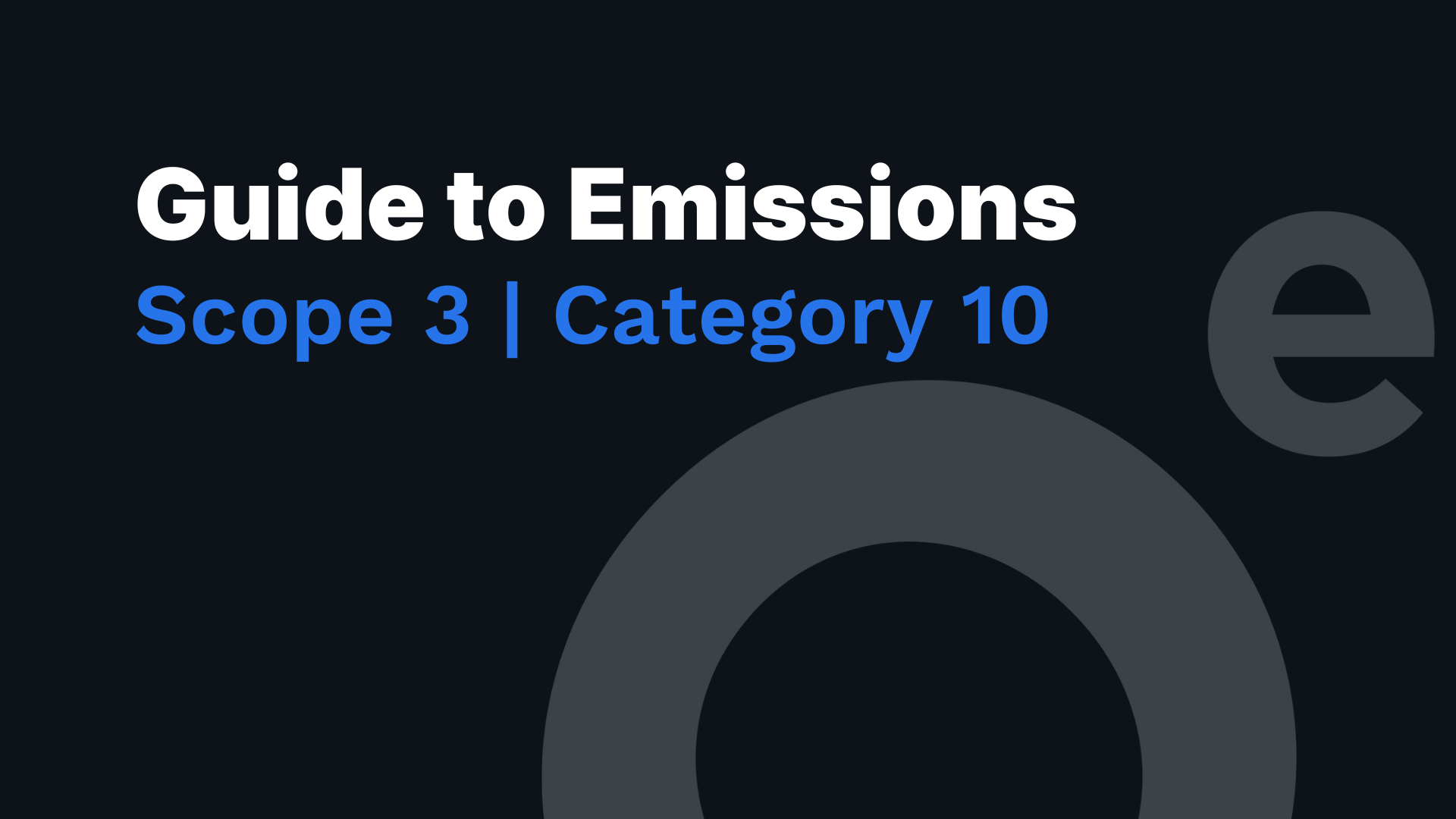What is Scope 3 Category 10 Emissions?
Category 10 covers emissions from the processing of sold intermediate products by third parties, such as manufacturers, after being sold by the reporting company. Intermediate products are those that need more processing, transformation, or incorporation into another product before they can be used by the end consumer. As a result, these products cause emissions from processing after they are sold by the reporting company. Emissions from processing should be assigned to the intermediate product.
In some cases, the final use of sold intermediate products might be unknown. For instance, a company that produces an intermediate product with various potential downstream applications, each with a different greenhouse gas (GHG) emissions profile, might not be able to reasonably estimate the downstream emissions associated with these different end uses.
What Data is Needed to Count the Emissions?
To calculate emissions for Scope 3 Category 10 (Processing of sold intermediate products), you will need the following data:
Intermediate product information: Identify all intermediate products sold by your company during the reporting year that require further processing, transformation, or inclusion in another product.
Third-party processors: Determine which third-party manufacturers or companies are responsible for processing your sold intermediate products.
Processing methods: Understand the processing methods used by third parties for each intermediate product, as these methods can impact emissions.
Quantities: Estimate the amount of each intermediate product processed by third parties after being sold by your company.
Emission factors: Acquire accurate emission factors for different processing methods and materials involved in the processing of intermediate products. This data can be sourced from governmental or industry-specific guidelines or from organizations like the Intergovernmental Panel on Climate Change (IPCC) and the World Resources Institute (WRI).
Collaboration and data sharing: Collaborate with third-party processors to collect data on their emissions during the processing of your company's sold intermediate products. This may involve direct communication or accessing public reports.
Once you have collected this data, you can calculate your company's emissions from the processing of sold intermediate products by applying the relevant emission factors to the estimated quantities and processing methods. Sum up the emissions associated with the processing of all intermediate products sold during the reporting year to determine the total emissions for Scope 3 Category 10.
What Methods Available to Count the Emissions?
These methods are listed in order of how specific the calculation is to the individual kind of intermediate products. However, companies need not always use the most specific method as a first preference.
Site-specific method, which involves determining the amount of fuel and electricity used and the amount of waste generated from processing of sold intermediate products by the third party and applying the appropriate emission factors
Average-data method, which involves estimating emissions for processing of sold intermediate products based on average secondary data, such as average emissions per process or per product.
Companies should choose a calculation method based on their business goals and their ability to collect data from processing of sold intermediate products by third parties. In many cases, collecting primary data from downstream value chain partners may be difficult. In such cases, companies should use the average-data method.
